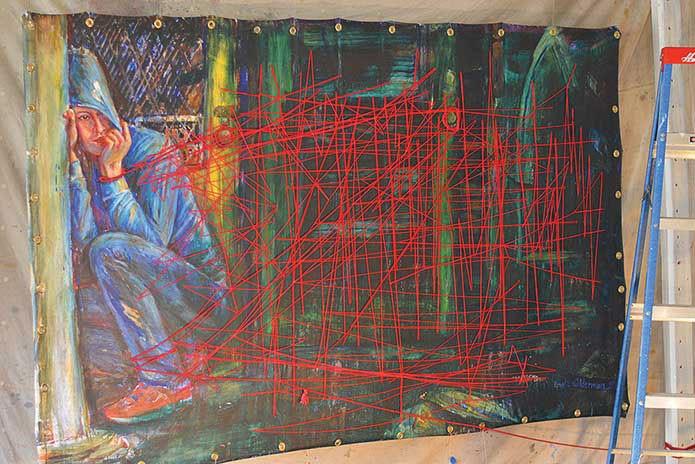The Scarlet Cord

GVL / Courtesy – Pamela Alderman
Jan 28, 2016
With the exception of Nevada, Michigan has the highest human trafficking rate in the country. During the first six months of 2015, there were 81 reported cases of human trafficking in the state.
Huge, tourist-laden events like the North American International Auto Show in Detroit and ArtPrize in Grand Rapids are hotspots for human trafficking to occur, especially sex trafficking.
“It’s important that we realize that this is on our doorstep and not just thousands of miles away,” said Jeff Chamberlain, director of the Frederick Meijer Honors College. “It’s a temptation for us to think that it’s (other countries’) problem, not our problem.”
To combat that mindset and raise awareness to what is really going on at home, the honors college, the political science department, the Joseph Stevens Freedom Endowment and student organization International Justice Mission (IJM) are hosting a film screening depicting human trafficking healing through art on Feb. 6.
The short film is a documentary about an art exhibit by artist Pamela Alderman, tied in with the experience of human trafficking during the 2015 Super Bowl.
Alderman created an exhibit that was displayed during ArtPrize 2014 about human trafficking that placed in the top 20. The installation, called “The Scarlet Cord,” featured paintings connected to each other by scarlet cord about trafficked young children that were bound to their captors by a figurative link, representing the power that the captor had over them.
Alderman said that displaying the exhibit at ArtPrize was very powerful for some visitors.
“’Scarlet Cord’ evokes tons of tears from visitors,” she said.
Much of Alderman’s work is emotional, as she has worked on projects memorializing people with cancer and those who have served in the armed forces, but she said “The Scarlet Cord” was different, because visitors would often tell Alderman their stories after visiting the exhibit.
“Something important about ‘Scarlet Cord’ is that women who have been traumatized at some time in their life were laying their heads on my shoulder and telling me their stories,” she said.
Once ArtPrize was over, Alderman traveled to Phoenix, Arizona with the exhibit. The stay in Phoenix during the 2015 Super Bowl, one of the biggest incidences of human trafficking in the country, is what sparked inspiration for the documentary.
The documentary focuses on the process of human trafficking and being rescued from the situation using dance as a medium to tell the story, and is supplemented by stories from women that actually went through human trafficking situations and their journey of healing once they escaped their situation.
“Creating the documentary was twofold, because it was about raising awareness and about healing for victims that wanted to share their stories,” Alderman said. “There’s a lot of healing in that.”
Chamberlain said that bring the documentary to campus was a natural move for the honors college, as they are frequently involved in education about human trafficking, whether it’s hosting events or structuring classes around the topic.
In addition to the documentary, there will be a small part of “The Scarlet Cord” exhibit present in the exhibition space in the Mary Idema Pew Library all week starting on Jan. 31. There will also be actual scarlet cord seen around campus as a signifier and reminder that human trafficking is more than just a documentary, it’s an issue that is present in everyday life.
“We want students to take it back to their classrooms so it’s not just an issue there and then,” Chamberlain said. “It’s one that continues in throughout campus in various ways.”
For more information about the film screening, visit the political science website at www.gvsu.edu/polisci.






















